Premium Only Content

Episode 3151: Another Church: Why the Synodal Path Is Not of Christ the King
Nightly Zoom Coordinates for Rosary:
Meeting ID: 865 8978 0399
Passcode: Wjjv4960!
Speak Lord for your Servant is Listening
Book Recommendation of the Day
Saint Jerome Emiliani (Founder of the Somaschi Fathers)
• Author: Charles S. Walton
• Around 89 pages—balanced study of Emiliani and his founding of the Somascan Fathers
• Paperback release: Feb 8, 2024
I attended an ordination mass of a friend who became a lay deacon. I’ve explained my feelings on lay deacons in the past that Traditional Catholics often express strong reservations about the modern practice of permanent lay deacons (often referred to as "permanent deacons") for several theological, liturgical, and historical reasons. These concerns stem from the Church’s longstanding understanding of holy orders, clerical identity, and the roles proper to the laity and clergy.
Here’s a detailed explanation:
1. Disruption of Traditional Clerical Structure
Traditionally, the diaconate was understood not as a permanent state, but as a transitional step toward the priesthood (diaconus in transitu). For centuries, the Church ordained men as deacons for a short period before their priestly ordination. Vatican II’s restoration of the permanent diaconate as a distinct vocation, particularly for married men, was a significant change.
Traditional Catholics argue that this innovation:
• Breaks with the historical norm of the Latin Church.
• Blurs the lines between laity and clergy.
• Creates confusion about the nature of sacred orders.
2. Theological Concerns: Ontology of Orders
The Sacrament of Holy Orders imparts an indelible mark upon the soul. While deacons are ordained and thus receive the sacrament, traditional theology always viewed the purpose of that character as preparation for the priesthood. By making the diaconate permanent and distinct, the post-Vatican II Church created what many traditionalists view as a theologically ambiguous class of clergy:
• Ordained, but not consecrating.
• Clergy, but often living secular lives like the laity.
• Frequently perceived more as “pastoral helpers” than as sacred ministers.
________________________________________
3. Confusion of Roles Between Clergy and Laity
The modern permanent deacon often:
• Preaches homilies at Mass.
• Administers baptisms.
• Witnesses marriages.
• Conducts funerals and wakes.
• Distributes Holy Communion.
Traditional Catholics worry this confuses the faithful, who might:
• Mistake lay deacons for priests.
• Begin to expect the laity to take on quasi-sacramental roles, further eroding the distinct sacrificial and sacerdotal nature of the priesthood.
St. Thomas Aquinas, the Council of Trent, and pre-Vatican II canon law all emphasized the ontological and sacrificial distinction of the priesthood, rooted in its power to consecrate and absolve—something deacons cannot do.
________________________________________
4. Pastoral and Liturgical Abuses
In many modern parishes, especially in the Novus Ordo context, permanent deacons are:
• Given roles that exceed traditional boundaries (e.g., running RCIA, managing parish staff, giving retreats).
• Frequently allowed or encouraged to preach at Mass, diminishing the priest's central teaching office.
• Sometimes used as a loophole for advancing feminist or modernist agendas by having wives of deacons informally “co-minister.”
This pastoral overreach is seen by traditionalists as contributing to the de-clericalization of the priesthood and the clericalization of the laity a hallmark of the postconciliar Church.
5. Lack of Historical Precedent for Married Laymen as Ministers
Although there were married deacons in the early Church, traditionalists argue:
• These were exceptional or tied to transitional situations.
• They were not embedded in the kind of bureaucratic or pastoral functions we see today.
• The Council of Trent reaffirmed clerical celibacy and viewed the diaconate as part of the sacred order leading to the priesthood.
They often point to Pope Pius XII and earlier popes who upheld this sacrificial and celibate nature of sacred orders in the Latin rite.
6. Undermining of Priestly Vocations
Traditional Catholics often observe that:
• The widespread use of permanent deacons can diminish the perceived need for priests, especially in smaller parishes.
• The growth of the diaconate is often inversely related to vocations to the priesthood.
• In practice, deacons become “substitute priests” in parishes that no longer have regular Masses accelerating the de-sacralization of the liturgy.
Conclusion: Faithfulness to Tradition
For traditional Catholics, the introduction of the permanent diaconate for laymen is emblematic of the post-Vatican II rupture with tradition:
• It redefines sacred orders.
• It weakens priestly identity.
• It fosters a horizontal, bureaucratic model of the Church.
“Another Church: Why the Synodal Path Is Not of Christ the King”
Daniel 5:27 (DR)
“THECEL: Thou art weighed in the balance, and art found wanting.”
This judgment was pronounced upon King Belshazzar for his sacrilege and pride, particularly for using the sacred vessels from the Temple in Jerusalem for a profane banquet.
It serves as a sobering reminder of divine justice and the moral accountability of all men, especially rulers.
Today we examine a startling continuation of what Archbishop Carlo Maria Viganò has long warned us about: the rise of a new church, one that bears the name of Christ but is no longer His Mystical Body.
What is the face of the new “Pope Leo” this new figurehead represents what Archbishop Viganò calls “Modernism with a human face.” This is not just a pope who happens to be different in style or emphasis he is the symbolic continuation of the Bergoglian revolution.
Segment One: From Francis to Leo – A False Continuity
Pope Francis has consistently promoted synodality, inclusivity, and doctrinal fluidity—all under the guise of “pastoral accompaniment.” His agenda has not been rooted in the immutable truths of the Deposit of Faith but in an evolving vision of Church that aligns with human desires, ecological concerns, and social equity goals. He has elevated the language of fraternity over the clarity of dogma and prioritized dialogue over conversion.
Now, with “Pope Leo,” we are not witnessing a reset, but a rebranding. A new face for the same revolution. As Viganò aptly describes, Pope Leo represents “modernism with a human face”—polished, strategic, perhaps even more palatable to traditional sensibilities—but nonetheless rooted in the same errors condemned by St. Pius X.
This is a modernism not denied, but baptized in emotional appeal and false mercy.
Segment Two: A Church Centered on Christ vs. the Church of Christ
What’s the difference between a “Church centered on Christ” and the Church of Christ?
The true Church of Christ, founded on Peter by Our Lord Himself, is not man-made. It is a divine institution, governed by immutable doctrine, sacred Tradition, and magisterial continuity. The phrase “centered on Christ” may sound pious, but it masks a terrifying inversion: it allows for multiple interpretations of Christ the ecological Christ, the synodal Christ, the migrant Christ, the feminine Christ all human projections.
This is not the Christ of the Gospels, not the Christ of the Cross, not the Christ of the Latin Mass. This is a fabricated Christ who affirms modern man rather than calls him to repentance and holiness.
Viganò, as one of the few prelates sounding the alarm, is telling us what many fear to admit: Pope Leo is not a restoration of tradition. He is the continuation of subversion a smiling face on the same rupture.
Segment Three: The Faceless Statue – Symbol of the New Church
The statue in the background, with its faceless form and geometric abstraction, tells us everything. It’s man recreating himself. It is a church of synodal ambiguity, no longer sacrificial but therapeutic, no longer liturgical but performative. The imposition of a smiling papal face upon this post-human sculpture is a chilling commentary:
This is no longer the persona Christi—this is the persona humani. Man has replaced God.
Pope Leo, rather than correcting the trajectory of his predecessor, appears poised to reinforce the synodal experiment and the decentralization of doctrine. The synods, the Amazonian liturgies, the Pachamama scandal, the reinterpretation of sexual ethics all of it remains intact. Only the voice and face have changed.
What Must We Do?
Traditional Catholics must understand that this is a moment of clarity. The smoke of Satan spoken of by Pope Paul VI did not vanish; it is now wearing a cassock, smiling for cameras, and proclaiming a “renewed” church.
We must not fall for the illusion. We must cling to the unchanging Faith passed down from the Apostles, preserved through the Latin Mass, the writings of the saints, and the perennial Magisterium.
The true Church of Christ cannot be modernized, synodalized, or democratized. It must be defended, suffered for, and loved even when eclipsed.
In recent years, the word “synodality” has taken center stage in the language of the Church. Synods, listening sessions, working documents, and regional assemblies have been heralded by their proponents as the future of Catholicism—a new Pentecost, they say, where the Church is “led by the Spirit” into something fresh, inclusive, and “attuned to modern man.” But if we take a closer look, what is being promoted is not a deepening of the Catholic Faith but a dismantling of it. The Synodal Path, particularly as it has emerged in Germany and been echoed in Rome, is not the organic development of doctrine guided by the Holy Ghost. Rather, it is a deliberate construction of a new church—one no longer rooted in divine revelation, apostolic tradition, or the unchangeable truths of faith and morals, but in the shifting winds of modern thought, sociopolitical activism, and human preference.
The Synodal Path and the Spirit of the Age:
The advocates of the Synodal Path often speak of it as a “movement of the Spirit,” a way for the Church to “listen” to the people and adapt to new realities. But the Holy Spirit is the Spirit of Truth, not of innovation. The truth revealed by Jesus Christ is not subject to opinion polls or democratic consensus. Yet what we are witnessing is a calculated effort to remake the Church—not in the image of Christ the King, but in the image of the world.
In Germany, this Synodal movement has called for the blessing of same-sex unions, the ordination of women to the diaconate (and implicitly the priesthood), and the dismantling of hierarchical authority by placing laypeople on equal footing with bishops. These proposals are not pastoral adaptations; they are doctrinal revolutions. They contradict Sacred Scripture, Apostolic Tradition, and two millennia of Church teaching. To bless sin is to deny the Cross. To promote women’s ordination is to reject the divine constitution of the Church. To redefine authority is to oppose the very keys of Peter.
Scriptural and Doctrinal Foundations Betrayed:
St. Paul, writing to the Galatians, makes a severe warning: “Though we, or an angel from heaven, preach a gospel to you besides that which we have preached to you, let him be anathema” (Galatians 1:8). The Synodal Path seeks precisely such a new gospel—a gospel more comfortable, more modern, more acceptable to the world. But the Church cannot preach a gospel of affirmation in place of repentance, of dialogue instead of doctrine, of process instead of truth.
What we see now is not a Church on pilgrimage toward heaven, but a bureaucracy on pilgrimage toward relevance. In this model, synodality becomes a mechanism for continual reinvention. The timeless teachings of Christ—about sin, grace, sexuality, the priesthood, and the nature of the Church—are treated as outdated scaffolding to be replaced by newer, more palatable structures. In effect, this is the attempt to construct what Pope Leo XIII called “a new church according to their own ideas, with foundations and laws drawn from the natural order.”
A Fabricated Church, Not the Bride of Christ:
What is being formed is not the Bride of Christ, but the bride of the world. This Synodal Church is marked by horizontalism, where vertical authority—from God through His ministers—is replaced by a leveling of all voices. It is marked by relativism, where every experience is treated as equally valid, and every doctrine is seen as open to reinterpretation. It is therapeutic rather than sacramental, bureaucratic rather than mystical. It no longer sees itself as the Ark of Salvation, but as a conversation partner in a pluralistic world, always changing, always evolving.
This vision of church is not rooted in the mission Christ gave to the Apostles. It is closer to the spirit of Babel than to the Spirit of Pentecost. At Pentecost, the Holy Ghost confirmed the disciples in the faith they had received from Christ. At Babel, men tried to build a monument to themselves, seeking unity apart from God. The Synodal Church is doing the latter: constructing a monument to inclusion, diversity, and human progress, without submission to divine truth.
Warnings from Popes and Saints:
St. Pius X warned in his encyclical Pascendi that the modernist seeks to transform everything—doctrine, worship, discipline—in order to make the Church acceptable to the world. Pope Benedict XVI, while still Cardinal Ratzinger, once noted that the Church may have to become smaller but more faithful, shedding worldly trappings and returning to her essential mission. And Archbishop Fulton Sheen cautioned that the Antichrist would not be an open enemy of religion, but a clever deceiver who would set up a “counter-church” that imitates the Church in all things, but empties her of divine truth.
Our Lady of La Salette prophesied that “Rome will lose the Faith and become the seat of the Antichrist.” Whether or not we are witnessing the full fulfillment of this prophecy, it is clear that many of those entrusted with leading the Church are guiding souls not toward Christ crucified, but toward acceptance in a godless world.
What Must the Faithful Do?
Faced with this grave crisis, we must not be passive. We cannot accept the false dichotomy of obedience versus fidelity. True obedience is to the eternal Magisterium, not to transient innovations or unlawful novelties. We must cling to what has always been taught, always believed, and always practiced. That means:
• Attending the Traditional Latin Mass and preserving the sacred liturgy untainted by modernist reforms.
• Studying and teaching the perennial Catechism of the Church, especially that of the Council of Trent.
• Raising children to understand that truth does not change and that salvation is not found in dialogue, but in repentance, baptism, and fidelity.
• Praying daily, especially the Holy Rosary, and consecrating our families to the Immaculate Heart of Mary.
• Supporting priests and bishops who remain faithful to the faith of our fathers and rejecting the flattery of those who chase after the applause of the world.
Christ Feeds the Multitude Will We Trust Him to
Spiritual Starvation in an Age of Excess
As we arrive at the Sixth Sunday after Pentecost, the Church gives us the miraculous feeding of the four thousand—Christ providing abundantly for those who followed Him into the wilderness. It is a profound moment: a physical miracle with eternal meaning.
Today, we live in an age of material excess and spiritual famine. While modern society offers endless stimulation, food, comfort, and convenience, it is starving in what matters most: truth, virtue, and grace.
The traditional Catholic soul knows this well. We see empty churches, irreverent liturgies, and the crisis of faith even among clergy. And we ask: How long, O Lord? But today’s Gospel gives us hope. Christ, seeing the hunger of His people, acts with compassion. He will not leave the faithful to starve. He will provide—but only if we follow Him, even into the wilderness of exile and obscurity.
Let us begin by breaking open today’s scripture readings and allow the witness of the saints—St. Jerome Emiliani and St. Margaret of Antioch—to strengthen our hope that Christ still feeds His remnant.
Epistle Reflection – Romans 6:3–11
“Know you not that all we, who are baptized in Christ Jesus, are baptized in his death? … So we also may walk in newness of life.”
St. Paul speaks boldly to the Roman Christians—and to us: Baptism is death to sin and new life in Christ. Not a symbolic act, not a rite of passage, but a supernatural transformation. If we have died with Christ, we must no longer serve sin.
This is a clear and painful challenge in our time. The modern Church has become silent about sin. Penance is neglected. Confessionals are empty. Too often, Baptism is presented as a celebration, not a crucifixion.
But the traditional Catholic knows the truth: we are called to die—to our passions, to the world, to pride—so that we may truly live in grace. The saints knew this well. Their path was not comfort, but cross. Today’s saint, St. Jerome Emiliani, reformed his entire life after captivity and gave himself to the care of orphans and the poor. He lived as one dead to the world and alive only to Christ.
Are we willing to do the same?
Gospel Reflection – Mark 8:1–9
“I have compassion on the multitude… for they have now been with me three days, and have nothing to eat.”
This Gospel recounts the miracle of the loaves, but it’s more than history—it’s a prophecy of the Eucharist and of the Church. Christ sees the hunger of His followers and provides—not with mere words, but with bread blessed and broken, prefiguring the Holy Mass.
This is the contrast between the modernist vision and the traditional faith. Where the modern Church offers vague slogans and worldly compassion, Christ gives Himself—Body, Blood, Soul, and Divinity. And He entrusts this miracle to His Church.
Yet in so many parishes, the Eucharist is no longer treated as sacred. Reverence is gone. Belief in the Real Presence has all but disappeared. And still, Our Lord says, “I will not send them away fasting.”
If we remain with Christ—even if that means exile from mainstream liturgy or comfort—He will feed us. The Traditional Latin Mass is the miracle of loaves renewed: Heaven touching Earth in silence, awe, and supernatural nourishment.
Saints of the Day - St. Jerome Emiliani
A Venetian nobleman turned soldier, he was taken captive in battle and experienced a profound conversion. After his release, he devoted his life to orphans, the sick, and the poor, founding homes and hospitals and giving up all wealth and position. He became a model of penitential charity and trust in Divine Providence.
His example reminds us: the Church is not restored through comfort, but through sacrifice.
Conclusionary Prayer
In the Name of the Father, and of the Son, and of the Holy Ghost. Amen.
O Lord Jesus Christ, who didst feed the hungry multitude in the desert and dost continue to feed Thy faithful with Thy Sacred Body and Blood, grant us the grace to hunger not for the things of this world, but for the Bread of Life which alone satisfies.
By the intercession of St. Jerome Emiliani and St. Margaret of Antioch, raise up in our time saints of courage, humility, and faith—so that Thy Church, purified and strengthened by trial, may shine forth again in holiness.
Help us to walk in the newness of life promised in Baptism, and to live always in gratitude for the miracle of the Mass. Keep us ever near to Thee, even in times of desolation, that we may never grow weary in following Thee.
Amen.
-
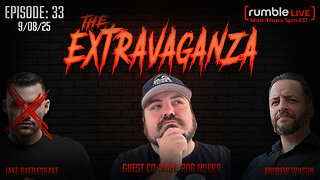 LIVE
LIVE
TheCrucible
1 hour agoThe Extravaganza! EP: 33 (9/08/25)
12,680 watching -
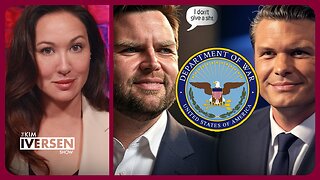 LIVE
LIVE
Kim Iversen
2 hours agoDepartment Of War is BACK: JD Vance Says "I Don't Give A Sh*t"
1,684 watching -
 LIVE
LIVE
Dr Disrespect
6 hours agoLIVE - DR DISRESPECT - MARVEL RIVALS, PUBG, OFF THE GRID - TRIPLE THREAT GAME CHALLENGE
1,014 watching -
 LIVE
LIVE
Candace Show Podcast
1 hour agoBecoming Brigitte: MK Ultra And The French Gold Rush.
4,544 watching -
 LIVE
LIVE
Rallied
1 hour ago $0.02 earnedSolo Challenges All Day
113 watching -
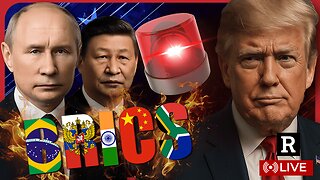 1:44:19
1:44:19
Redacted News
2 hours agoHIGH ALERT! BRICS CALLS EMERGENCY MEETING IN BRAZIL, TRUMP THREATENS TO DESTROY RUSSIAN ECONOMY
94.4K53 -

Stephen Gardner
1 hour ago🔥FINALLY! Trumps ORDER TODAY has Democrats PANICKED!
9.36K5 -
 30:38
30:38
Kimberly Guilfoyle
3 hours agoBreaking News Coverage, Live with Former DEA Administrator Derek Maltz & Tony Kinnett | Ep252
13K4 -
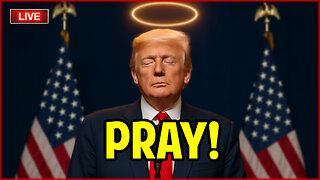 48:17
48:17
Mark Kaye
6 hours ago🔴 What Trump Said About Prayer in Schools SHOCKED Everyone!!
32.3K14 -
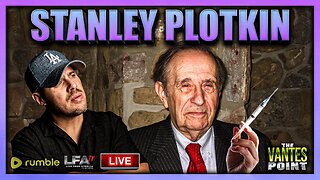 LIVE
LIVE
LFA TV
19 hours agoLFA TV ALL DAY STREAM - MONDAY 9/8/25
1,245 watching